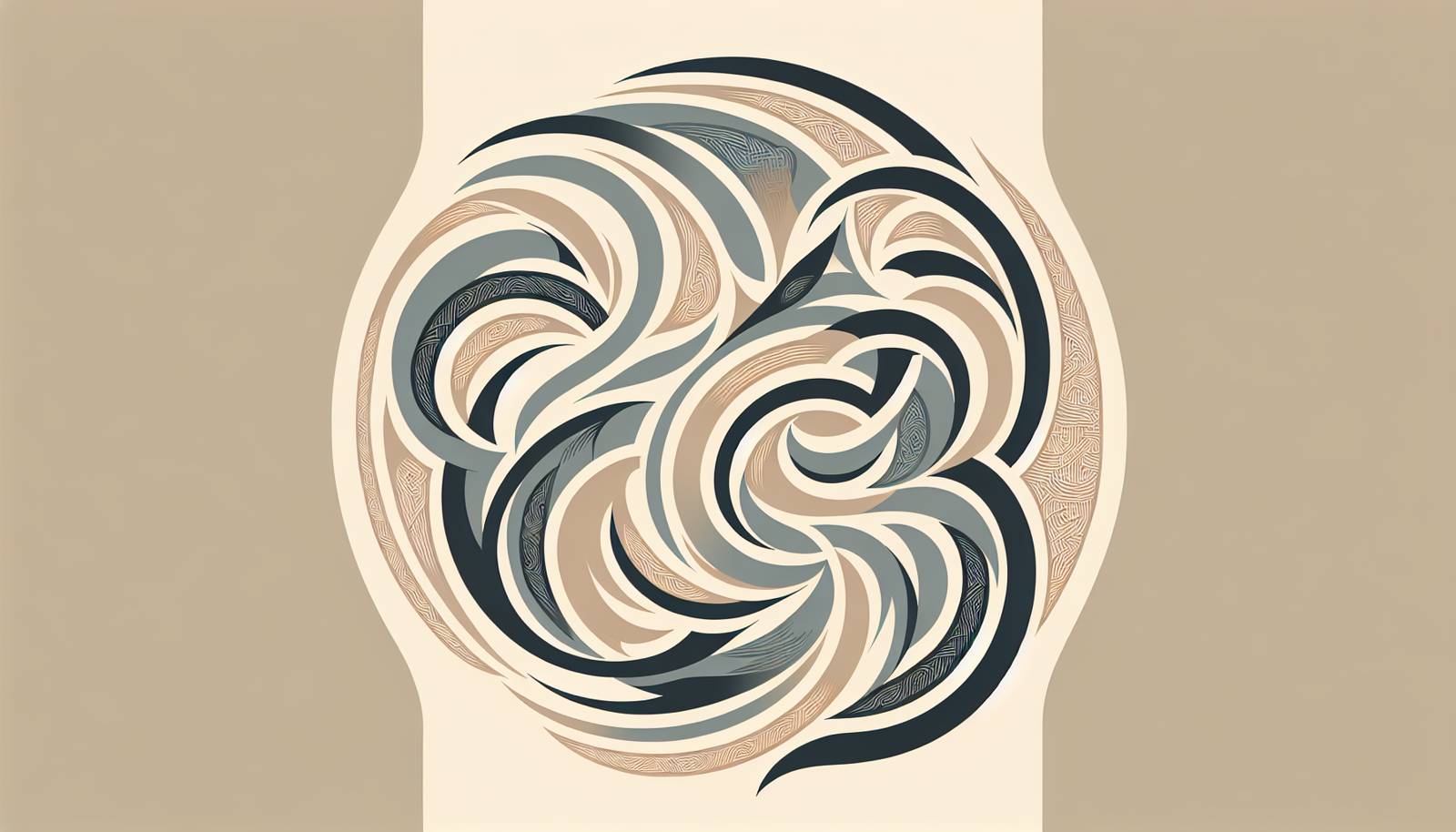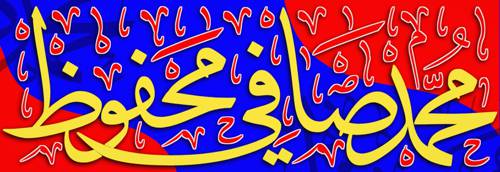
FAQ About The Influence of Arabic Calligraphy on Modern Graphic Design

What is Arabic calligraphy?
Arabic calligraphy is a form of artistic expression that involves the stylized writing of the Arabic script. It is a significant facet of Islamic art and culture, often used in religious texts, architecture, and decorative arts. The beauty of Arabic calligraphy lies in its ability to transform written text into visual art through the use of curves, lines, and geometric shapes.

How does Arabic calligraphy influence modern graphic design?
Arabic calligraphy influences modern graphic design by inspiring the use of elegant scripts and typography within design work. It brings an element of traditional craftsmanship into contemporary visual arts, offering new aesthetic perspectives through the use of flowing lines and intricate designs. This fusion helps designers create unique and culturally significant works that resonate on a universal level.

What are some common types of Arabic calligraphy used in graphic design?
In graphic design, several styles of Arabic calligraphy are often used, including Naskh, Thuluth, Diwani, Ruq'ah, and Maghrebi. Each style has its own distinctive characteristics and uses, with Naskh being widely used for readability, and Thuluth known for its decorative elegance.

Why is Arabic calligraphy considered an art form?
Arabic calligraphy is considered an art form because it goes beyond simple handwriting to create aesthetically pleasing compositions. The calligrapher uses creativity and skill to balance form and content, often drawing upon historical and cultural contexts, making it both an art and a means of communication.

Can non-Arabic designers effectively incorporate Arabic calligraphy into their work?
Yes, non-Arabic designers can incorporate Arabic calligraphy into their work, provided they approach it with respect and understanding of its cultural significance. Collaborating with native speakers or calligraphers can help ensure accuracy and authenticity. Being mindful of the cultural and religious contexts surrounding the use of Arabic script is also important.

How has modern technology impacted the use of Arabic calligraphy in design?
Modern technology has significantly impacted the use of Arabic calligraphy in design by making it more accessible through digital tools and software. Designers can now utilize computer-aided design (CAD) programs to create intricate calligraphic art efficiently, allowing for more experimentation and the integration of calligraphy in various design platforms such as web design, branding, and advertising.

What role does Arabic calligraphy play in branding and logos?
Arabic calligraphy plays a major role in branding and logos by offering a unique and culturally resonant visual identity. When incorporated into logos, it can convey a brand's heritage, authenticity, and commitment to artistic excellence. It is particularly powerful for brands wanting to connect with Arabic-speaking audiences or emphasize traditional values in a modern setting.

Are there famous designers known for using Arabic calligraphy in their work?
Yes, several designers are renowned for their use of Arabic calligraphy, such as Iranian artist Parinaz Bahadoran and Lebanese designer Nadine Kanso. These artists blend traditional elements with contemporary design practices, contributing significantly to the visibility and appreciation of Arabic calligraphy globally.

How does Arabic calligraphy affect typography in graphic design?
Arabic calligraphy affects typography in graphic design by providing a framework for creating visually striking typefaces that merge traditional influences with modern font design. This allows for the development of culturally rich and aesthetically engaging typesets that can be used in various media, enhancing communication and visual storytelling.

Is Arabic calligraphy used in digital media and animation?
Yes, Arabic calligraphy is increasingly being used in digital media and animation. Digital tools allow designers to animate calligraphy, adding movement and dimension, which can be seen in digital marketing, video games, and animated films. This helps in creating dynamic and engaging visual content that captures the essence of Arabic art.

In what ways has Arabic calligraphy been adapted in Western design?
Arabic calligraphy has been adapted in Western design by inspiring new fonts, decorative motifs, and pattern designs. Graphic designers often incorporate calligraphic elements to add exoticism and sophistication to their work, while also fostering cross-cultural artistic exchanges that enrich both Western and Islamic art traditions.

What are the challenges of integrating Arabic calligraphy into modern design?
One of the main challenges of integrating Arabic calligraphy into modern design is ensuring that the script is not only aesthetically pleasing but also readable and contextually appropriate. Designers must also be mindful of cultural sensitivities to avoid misrepresentation or commodification. Technical challenges might include digital rendering and maintaining calligraphic integrity in various media formats.

How can Arabic calligraphy enhance user interfaces (UI) and user experience (UX) design?
Arabic calligraphy can enhance UI and UX design by introducing elegant visual elements that capture attention and express cultural identity. Calligraphic designs can improve the aesthetic appeal of interfaces while providing a unique user experience that resonates with users from different cultural backgrounds, adding an emotional and artistic layer to digital interactions.

What educational resources are available for learning Arabic calligraphy for graphic designers?
Several educational resources are available for graphic designers interested in learning Arabic calligraphy, including online courses, workshops, and books. Websites like Coursera and Udemy offer beginner to advanced courses, while books by renowned calligraphers provide detailed insights and techniques. Engaging with the calligraphy community through social media and forums can also be valuable.

How do cultural perceptions affect the use of Arabic calligraphy in global design projects?
Cultural perceptions greatly affect the use of Arabic calligraphy in global design projects. Designers must consider cultural sensitivities and the contextual meaning of calligraphy to avoid cultural appropriation or misinterpretation. Successful design projects often involve collaboration with cultural experts to ensure the authenticity and respectful representation of the calligraphy used.

What are some examples of modern graphic design projects using Arabic calligraphy?
Modern graphic design projects using Arabic calligraphy include branding campaigns, fashion design, and architectural artworks. Examples might include international advertising campaigns by brands who incorporate calligraphy to reach Middle Eastern markets or art installations in galleries that celebrate Islamic culture through contemporary design practices.

How does Arabic calligraphy contribute to the visual identity of a brand?
Arabic calligraphy contributes to the visual identity of a brand by offering distinctive aesthetic qualities that highlight cultural heritage and authenticity. Such calligraphic elements can appeal to consumers seeking uniqueness and artistic value, and can strengthen brand recognition and loyalty, especially within Middle Eastern markets.

What role do cultural festivals and exhibitions play in promoting Arabic calligraphy in modern design?
Cultural festivals and exhibitions play a crucial role in promoting Arabic calligraphy by showcasing its application in modern design contexts. These events offer opportunities for designers and artists to present their work to a wider audience, facilitating cross-cultural dialogue and increasing appreciation for calligraphy as a dynamic and evolving art form.

How can designers balance traditional Arabic calligraphy with modern design trends?
Designers can balance traditional Arabic calligraphy with modern design trends by experimenting with different compositions, color schemes, and multimedia elements. They can maintain the integrity of traditional calligraphy while incorporating it into contemporary formats, ensuring relevance and appeal to modern audiences without losing the cultural essence of the art form.

What impact does Arabic calligraphy have on global design aesthetics?
Arabic calligraphy has a profound impact on global design aesthetics by introducing new forms and styles that challenge conventional design norms. Its incorporation into global design projects fosters innovation and enriches visual artistry, promoting cultural diversity and enhancing the visual language of design worldwide.
